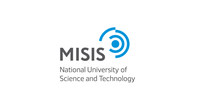MOSCOW, July 26, 2018 /PRNewswire/ --
Scientists from NUST MISIS and colleagues from the University of Bayreuth, the University of Münster (Germany), the University of Chicago (U.S.), and Linköping University (Sweden) have created nitrides, a material previously considered impossible to obtain. More amazing, they have shown that the material can be obtained using a very simple method of direct synthesis. Articles about the revolutionary research results have been published in Nature Communications and Angew Chem Int Ed.
(Photo: https://mma.prnewswire.com/media/723250/Cystal_iron_nitrogen_compounds.jpg )
(Logo: http://mma.prnewswire.com/media/484501/NUST_MISIS_Logo.jpg )
Nitrides are actively used in superhard coatings and electronics. Usually, the nitrogen content in these materials is low, and it is therefore difficult to get the nitrogen levels to exceed the levels of transition metals (as the nitrogen bonds are too high energy).
Compounds rhenium and iron, which the researchers chose for the experiments, embody this problem particularly well. As such, the researchers decided to change the synthesis from ordinary conditions on Earth to a condition of ultra-high pressure.
"This method is one of the most promising ways to create new high quality materials, and it opens up fantastic opportunities. There are well-known examples like artificial diamonds and cubic boron nitride (CBN), which existed in a natural form. However the idea to consciously create materials that are impossible [to make] in nature is our know-how," commented Igor Abrikosov, Head of the NUST MISIS Laboratory for the Modelling & Development of New Materials.
According to Abrikosov, the experiments produced results almost immediately. Nitrogen, together with a transition metal, is placed into a diamond anvil cell, and a simple direct synthesis is carried out under high pressure.
"Rhenium nitride has a characteristic of low compressibility, so it potentially has very high mechanical characteristics and the characteristic of superhardness - which is important, for example, in improving the quality of cutting tools," Abrikosov added.
Abrikosov believes the research group will later clarify whether the materials are superconductors or magnets, and whether they are suitable for spintronics.
Their backward chaining requires more experimental facilities for further analysis. Those facilities are already underway however, and are likely to bear fruit within the next year.
If the research team proves the material's assumed superhardness, then within 5 years we will be able to see the «impossible» materials being used in commercial fields.
National University of Science and Technology MISIS
In 2018, NUST MISIS is celebrating a century since the founding of its predecessor, the Moscow Mining Academy. Today, NUST MISIS is one the most dynamically developing centers for research and education in Russia. Being among the leaders of technological education, NUST MISIS is also a large-scale research center. The University has been included in the THE, QS and ARWU subject rankings in six fields, notably taking 30th place in «Engineering - Mineral & Mining», and appearing in the TOP-100 for 'Engineering - Metallurgy'.
The strategic goal of NUST MISIS is to strengthen its positions in the fields of materials science, metallurgy and mining, as well as to significantly strengthen its positions in the fields of bio-, nano- and IT-technologies by 2020. The University is comprised of 9 institutes and 5 branches - four in Russia and one abroad. More than 17,000 students from 69 countries study at NUST MISIS. 30 laboratories and 3 world-class engineering centers, where leading international scientists work, operate at NUST MISIS. The University successfully implements joint projects with leading Russian and international high-tech companies.


Share this article